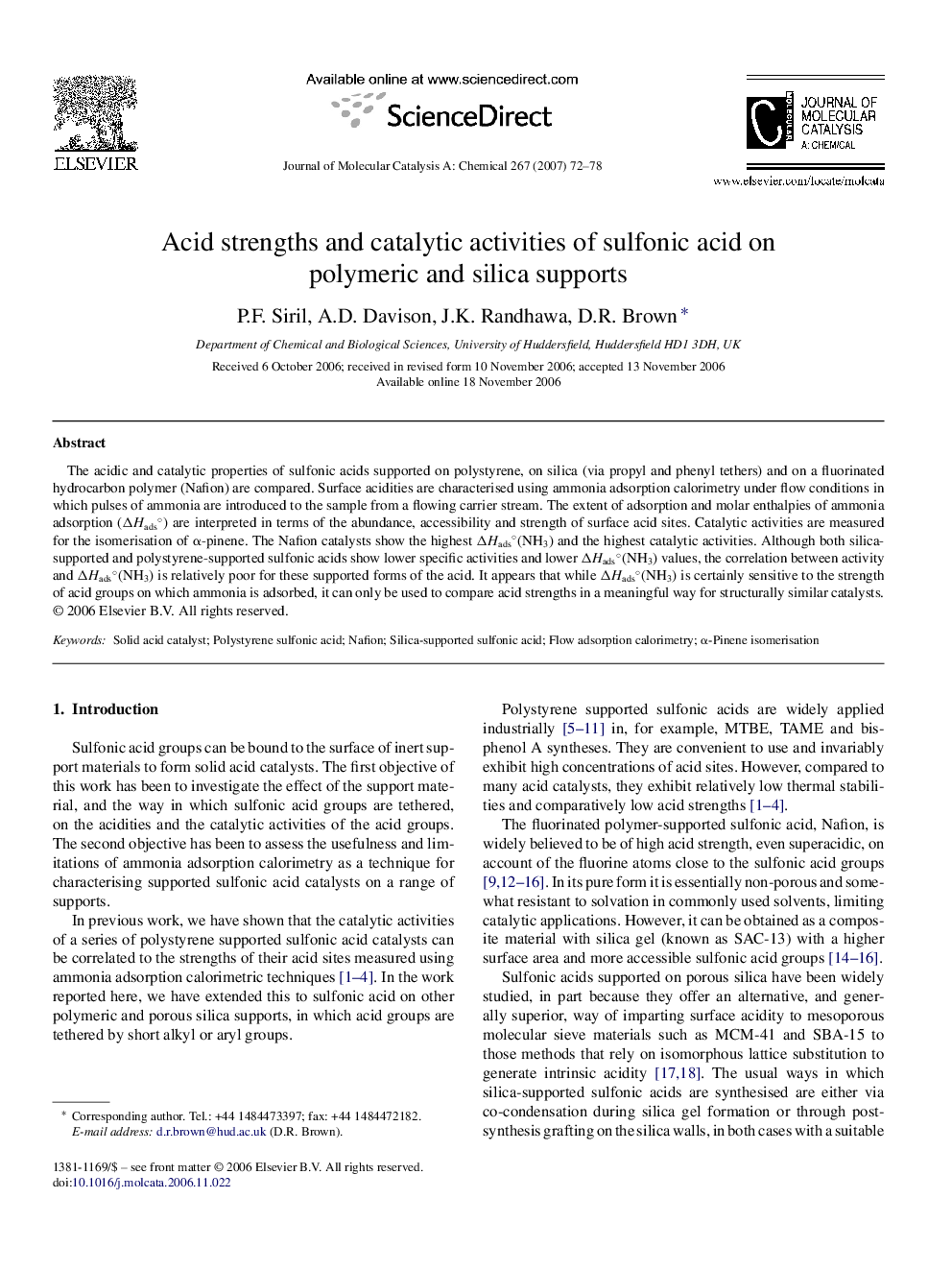| کد مقاله | کد نشریه | سال انتشار | مقاله انگلیسی | نسخه تمام متن |
|---|---|---|---|---|
| 68780 | 48523 | 2007 | 7 صفحه PDF | دانلود رایگان |

The acidic and catalytic properties of sulfonic acids supported on polystyrene, on silica (via propyl and phenyl tethers) and on a fluorinated hydrocarbon polymer (Nafion) are compared. Surface acidities are characterised using ammonia adsorption calorimetry under flow conditions in which pulses of ammonia are introduced to the sample from a flowing carrier stream. The extent of adsorption and molar enthalpies of ammonia adsorption (ΔHads°) are interpreted in terms of the abundance, accessibility and strength of surface acid sites. Catalytic activities are measured for the isomerisation of α-pinene. The Nafion catalysts show the highest ΔHads°(NH3) and the highest catalytic activities. Although both silica-supported and polystyrene-supported sulfonic acids show lower specific activities and lower ΔHads°(NH3) values, the correlation between activity and ΔHads°(NH3) is relatively poor for these supported forms of the acid. It appears that while ΔHads°(NH3) is certainly sensitive to the strength of acid groups on which ammonia is adsorbed, it can only be used to compare acid strengths in a meaningful way for structurally similar catalysts.
The acidic and catalytic properties of sulfonic acids (structure given below) supported on polystyrene, on silica (via propyl and phenyl tethers) and on a fluorinated hydrocarbon polymer (Nafion) are compared. Adsorption of ammonia from a flowing carrier gas stream was used to characterise the surface acidity of these catalysts and the catalytic activities for isomerisarisation of α-pinene have been explained on the basis of acidity characterisation. Figure optionsDownload as PowerPoint slide
Journal: Journal of Molecular Catalysis A: Chemical - Volume 267, Issues 1–2, 18 April 2007, Pages 72–78